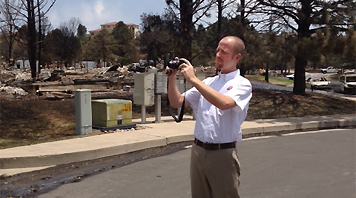|
RMIIA News Releases7951 E. Maplewood Avenue, Suite 110 Contact: Hurricane Sandy Reminds Colorado Homeowners, Renters & Business Owners that NOW is the Time to Consider Flood Insurance. November 5, 2012 – The devastating images of the Northeast underwater is a stark reminder to Coloradans that they need to consider separate flood coverage to protect their property, personal belongings and businesses. Your car is covered for flood damage only if you purchase optional "comprehensive" coverage. "It's estimated that up to 25 percent of flood claims are filed in lower risk areas," says Carole Walker, Executive Director of the Rocky Mountain Insurance Information Association. "So, all homeowners, at least, need to consider purchasing additional flood coverage." There is also increased flood risk in wildfire burn areas and updated FEMA flood maps place some in higher flood hazard areas. Additionally, winter storm season adds to flooding concerns with snow melt frequently causing surface water damage. While the physical damage caused by Hurricane Sandy from high winds and downed trees is covered by personal and commercial insurance, many homeowners affected by the flood do not have insurance, so they are left struggling with how to recover from the disaster. About 13 percent of homeowners countrywide have flood insurance, and out West the number of policies in force is only about 6 percent. Flood insurance is not covered under a standard homeowners, renters or business insurance policy, but it can be purchased through your insurance agent or company representative. Flood insurance must be in place 30 days in advance of the flood, so if you are concerned about the heightened risk, now is the time to check into flood insurance. Flood insurance is funded federally through the National Flood Insurance Program (NFIP) and your community must participate for you to be eligible. It is also important to know what your flood insurance policy covers, as there are separate policies for contents and structure, as well as limits of $300,000 for residential coverage and $500,000 for business policies.
Flood Insurance Q&A Q. Can I buy flood insurance if I am located in a high-flood-risk area? Q. Can I buy flood insurance immediately before or during a flood? Q. Is flood insurance only available for homeowners? Q. I don't live in a high-flood-risk zone, so why would I purchase flood insurance? Q. Does NFIP offer any type of basement coverage? For more information, visit www.floodsmart.gov. For more consumer information on insurance topics, logon to www.rmiia.org. ### Rocky Mountain Insurance Information Association is a non-profit consumer information organization. Affiliated with the Insurance Information Institute, RMIIA has been serving consumers and the media since 1952. |
|
303-790-0216 • 800-355-9524 • Contact Us • Legal Notice, Disclaimer & Terms of Use
Home • About RMIIA • News Room • P&C Insurance Industry • Auto • Homeowners • Business • Catastrophes • Agent Resources • Events & Education • Brochures

